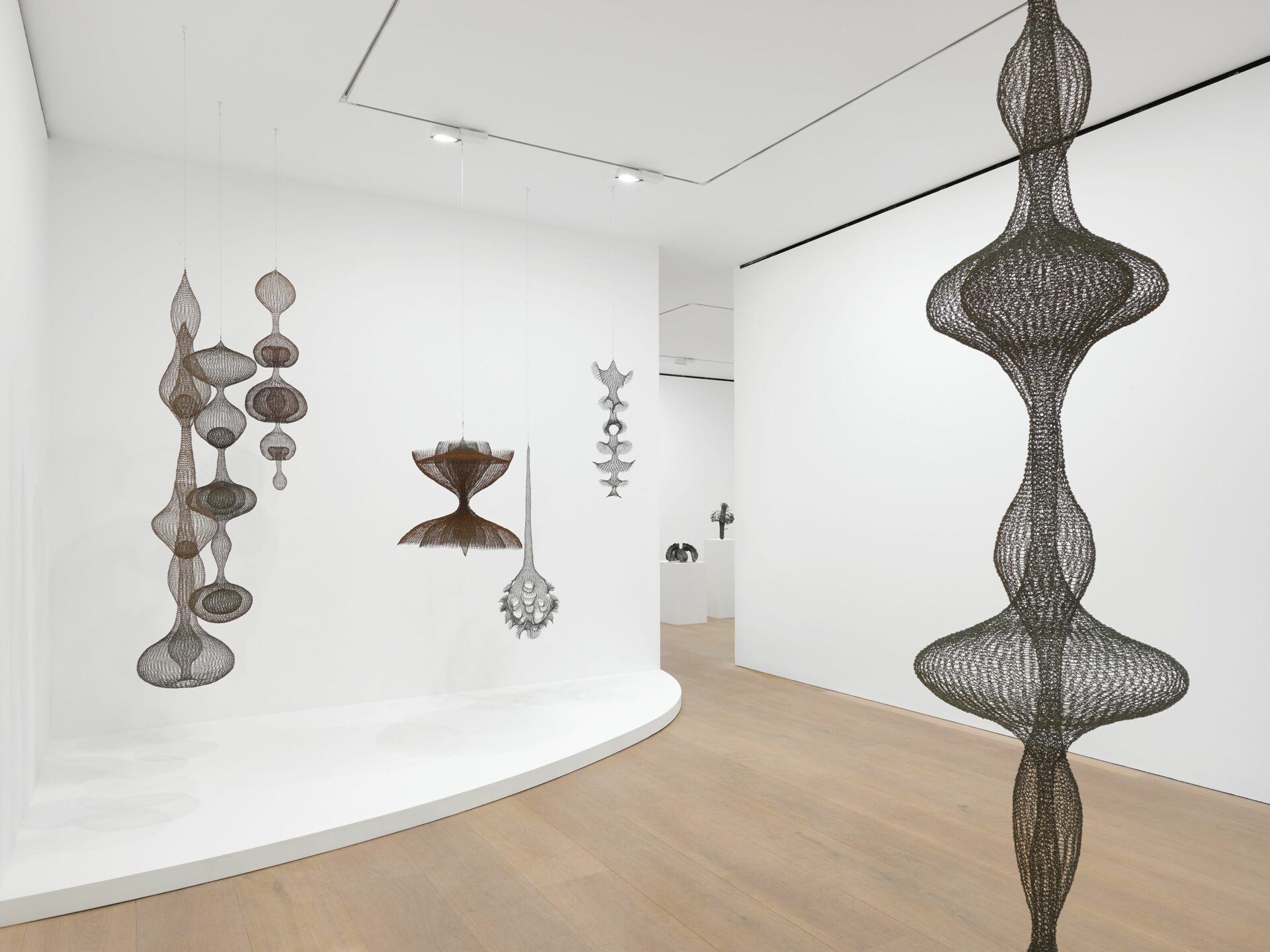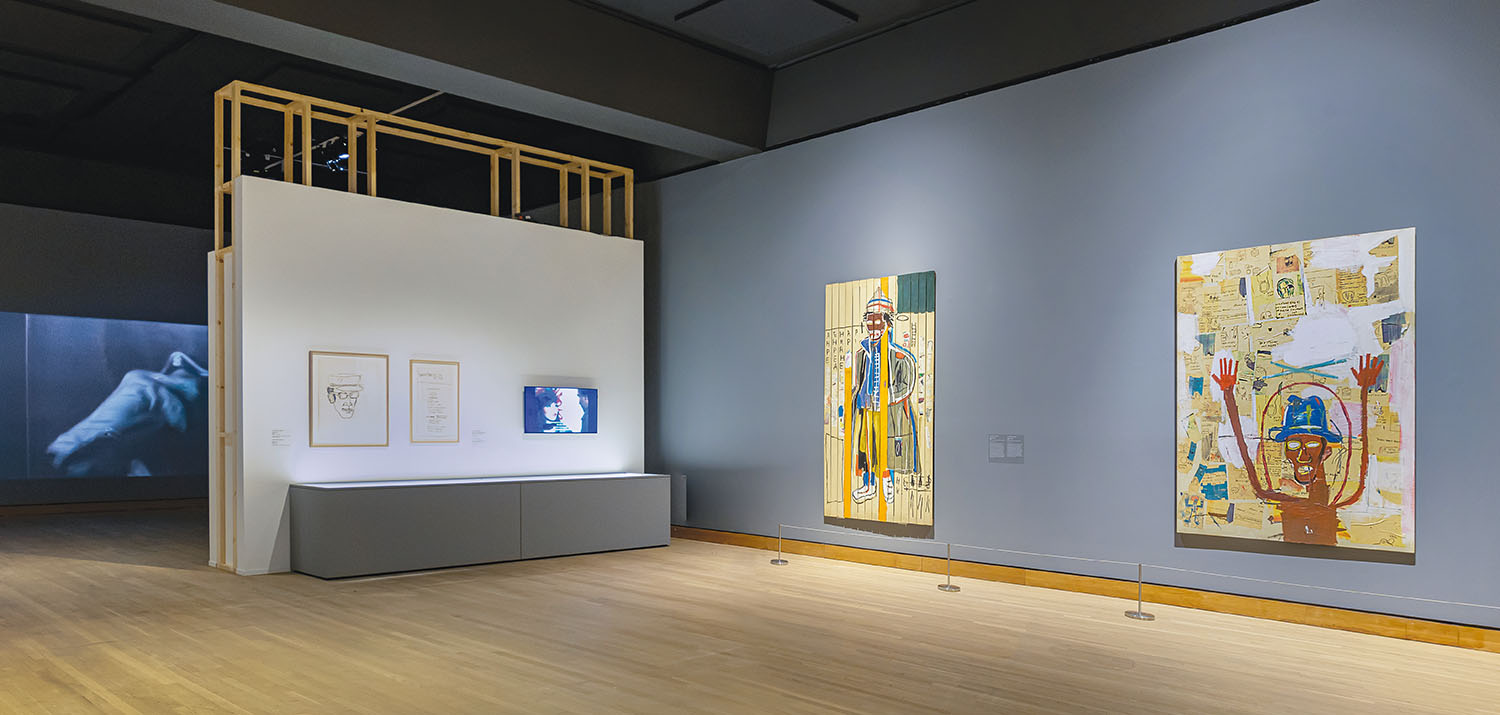
[En anglais]
At present, mired in the tumultuous particularities of our contemporary moment, so much to admire about Ruth Asawa — her work and her life, which were intertwined with organic and committed rigour. “Art is doing. Art deals directly with life,” said Asawa; and “sculpture is like farming. If you just keep at it, you can get quite a lot done.” So she did, creating a huge body of work over more than half a century, much of which has only recently, since just before her death in 2013, gained widespread attention in the art world. A 1956 photograph taken by Asawa’s friend, the photographer Imogen Cunningham, shows the artist in her studio with a vast array of her best known medium, intricate looped and tied wire sculptures, hovering behind her, suspended from the ceiling and affixed to the walls: a hint at the degree to which Asawa lived immersed in her work, a tireless and devotional manual practice.

Untitled (S.590, Hanging Open Undulating Form), c. 1960.
Photo : © The Estate of Ruth Asawa, courtesy of The Estate of Ruth Asawa & David Zwirner, London
At David Zwirner, a large collection of these types of sculpture are on display, hanging in tensile groups of bronze, copper, brass, iron, and stainless steel, made from single, seem ingly endless strands that glint in the light and sway with the barest of breezes. Their shapes are both transparent and solid, shifting with each viewpoint, and it is tempting to affix formal associations — tree, womb, sea creature, mathematical equations mapped in space, wild geometric parabolas like modernist pavilions, flowers, dendrites, dandelion clocks, ghostly bodies. But this is the challenge of the work: to let it continue to grow and change inside the viewer, to resist linear and categorical readings, to push the mind further.
Créez-vous un compte gratuit ou connectez-vous pour lire la rubrique complète !
Mon Compte



